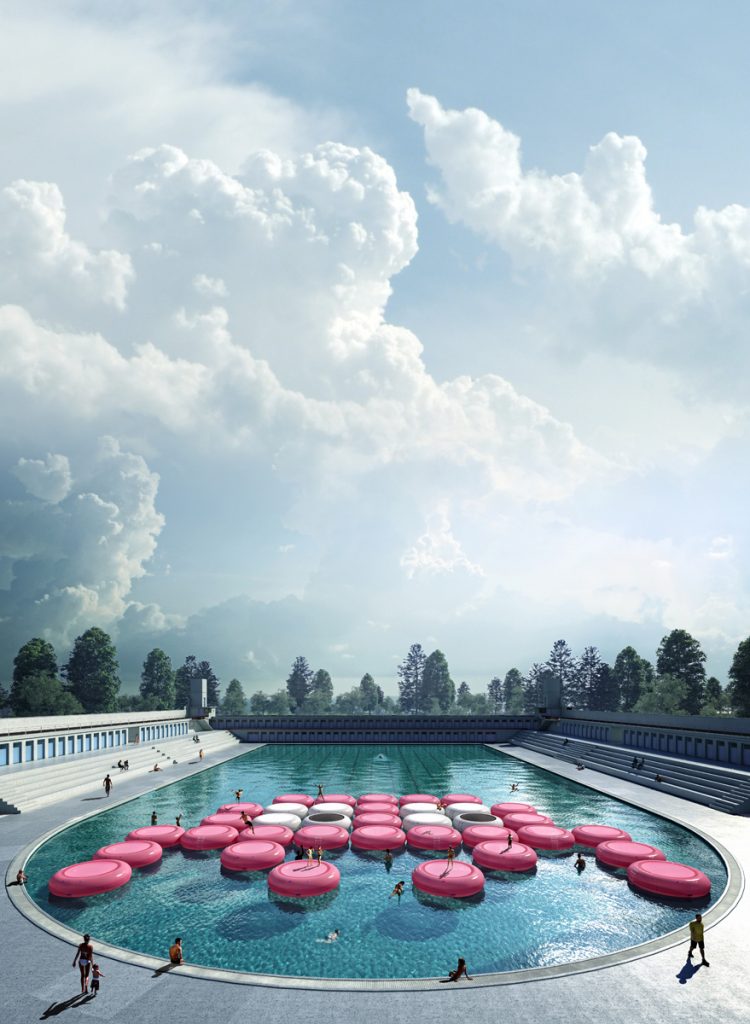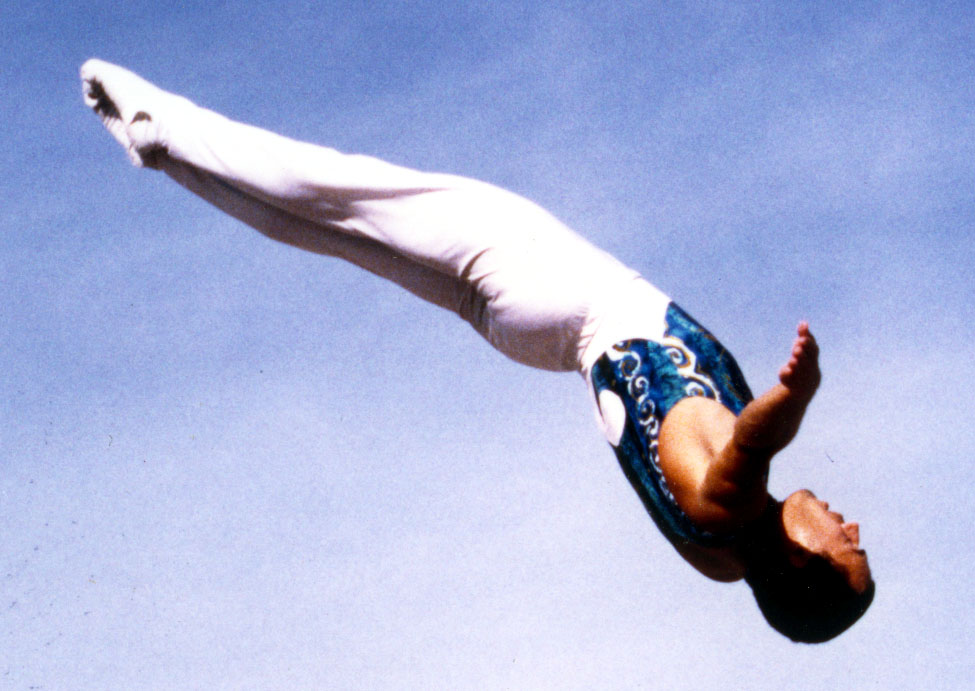-
“l’Entorse” associationby Julien Carrel
Julien Carrel, president of the association Entorse explains the process behind the collaboration with AZC as part of the proposal Water Invaders.

Hermann Lugan and I founded L’Entorse in 2006 in Lille, with the aim of forging links between the worlds of art and sport, two worlds whose functions and followings too frequently remain compartmentalised.
Today, nearly 30,000 people visit some 40 municipalities in Lille and across the Nord-Pas-de-Calais region of north-eastern France that host the biennial festival of exhibitions, shows and participatory projects exploring the world of sport.
At the end of 2012, in response to our call for projects for the 2014 festival, AZC proposed Water Invaders. Their proposal came with several site options: in areas of natural water within the Lille conglomeration, or in the Salengro swimming pool in Bruay-la-Buissière, 30 miles south-east of Lille – one of the most beautiful Art Deco open-air swimming pools still in use in France. These different options fitted well, and with some degree of pertinence, with local public strategy for promoting the heritage and leisure activities of these areas of water.
Water Invaders appealed to us because in the image of the L’Entorse festival, which unites sports fans and arts enthusiasts, it brings together ideas that are apparently contradictory, or at least disjointed: visual impact and sports recreation, monumentality and simplicity, an original take on familiar references – Space Invaders, trampoline.
In terms of relational and participative aesthetics, this piece reminds us just what rich and fertile sources of inspiration areas of natural water, and swimming pools, can be for contemporary designers, artists and architects. Among many other projects, we might be reminded of Daniel Buren and Pauline Fondevila’s range of striped sails, Franck Bölter’s giant paper boat building performance, or the installation ‘Les Thermes’, by arts collective Amicale de Production. Perhaps it is because water games and water sports are, from early childhood, particularly joyful and memorable experiences, giving rise to powerful images and feelings?
Water Invaders is a sort of Proust’s madeleine in a swimsuit, drawing as it does on nostalgia for a classic video game and the childish joy of bouncing off a trampoline into water. It remains our intention to find partners, in and around Lille, who are ready to take the plunge in creating the conditions for the production and use of this installation.


-
Inflatable structures: the new playground for architects – Lily in the 20hby TF1
It is a monument able to rise in seconds, thanks to a simple fan. A refectory, an artist's studio or even a golf practice, the inflatable structures are rediscovering a new life. The details in picture in the video below. This topic was broadcast in the television news of 20H of 22/06/2019 presented by Anne-Claire Coudray on TF1.


-
The trampoline is the sport of spaceby Emmanuel Durand
Emmanuel Durand, former world trampoline champion and head coach of the show "O" (Cirque du Soleil - Las Vegas), talks about his relationship with the trampoline and the effect this practice has on people. Excerpts from "Time For Play: Why Architecture Should Take Hapiness Seriously".

My first contact with the trampoline was all about the fun you could have on it: pure pleasure, lots of laughing, losing your balance and experiencing a rare sense of freedom. To give you a flavour of what professional trampolining is like, imagine you are flying along your very own rollercoaster – hold on tight! Standing up, sitting down, on your stomach or back, you have an incredible feeling of lightness, freedom and even weightlessness. It's sport in space – as Neil Armstrong stepped onto the moon on 21 July 1969, he said: “It’s like a trampoline!”
Trampolining, as an acrobatic sport, demands extreme concentration, similar to that of a Formula One driver who has to process a maximum amount of information in a minimum of time. Multiple somersaults and spins eight metres up in the air require grace, technique and a perfect control of the body. Trampolining is not about improvisation, but is planned to the nearest centimetre. During a 20-second exercise, the athlete has only four seconds where he can use his visual perception. The rest of the time, he is relying on a sensory perception based on his movements. The trampolinist multiplies and diversifies rotations and twists for those few seconds of total freedom.
Trampolining began with two Italian professional trapeze artists known as ‘Due Trampoline’, who used the elasticity of the safety net to perform acrobatic jumps. In 1936, thanks to equipment invented in the United States by George Nissen, a physical education teacher, Icarus’s dream finally became possible: jumping, soaring upwards, gliding, bouncing on a mesh to better leap back into the air again. This prototype was used to train pilots and cosmonauts, but after the end of the war, American schools and universities began to include trampolining as part of physical education, leading fairly quickly to the development of trampolining as a competitive sport. In 1948, the first USA championships took place. This most beautiful piece of sports equipment in the world, the one that allows you to control your body in space, officially arrived in France in 1965, and within five years had become an elite sport. From then on, trampolining quickly became established as an important means of making progress in all other acrobatic sports.
I have worked for the Cirque du Soleil for over thirteen years, where my everyday life involves a mix of artistic performances most of which are developed from sport practised at a professional level. Experienced athletes from all over the world have learnt how to transfer their skills into a new discipline – circus, to the delight of our audiences. Physical exercise has more and more of a role in our everyday health, it has such potential, and there are so many positive cultural spin-offs so beneficial for society today. Through sharing, effort and enjoyment, sport generates a really positive energy. This energy should be supported, recognised and widely broadcast throughout the city, it’s such a viral thing. The Bouncing Bridge is an initiative that fits perfectly with these needs. An appealing, bouncing surface, for a softly extreme and seriously fun experience. A few seconds of freedom, feet in the air, releasing you from everyday routine with your head upside down and a new perspective on the city. What more could one ask?


